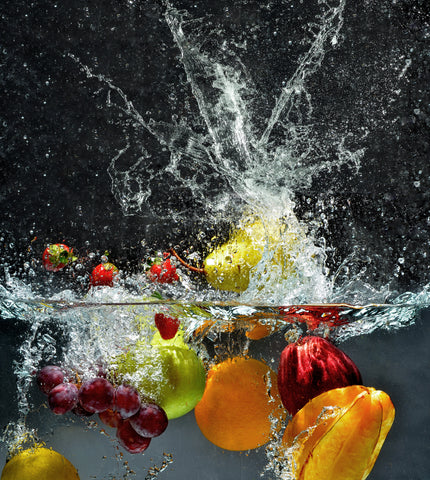Skip the E. Coli: How to Kleen Produce

Within the past week, a major food producer recalled about 9,000 pounds of lettuce (including ready-to-eat varieties) due to an E. Coli outbreak that has sickened dozens of people. At last count, the E. Coli outbreak had spread to eleven states. Yikes. If you're wondering how produce can become contaminated with pathogens such as E. Coli, Listeria, Salmonella and many more, you're not alone. Sources of contamination include livestock feces, heavy rains of which run-off can spread pathogens from livestock feces, produce handlers, farming and harvesting equipment and more. With Spring comes the return of the robust, fresh and delicious seasonal produce. But how do you enjoy your favorite seasonal fruit and veg without getting sick? By kleening your produce, of course.
According to experts at the FDA, you'll only need fresh tap water to clean produce. Begin by washing your hands thoroughly with soap and warm water (scrubbing hands using soap for about 20 seconds).
- Produce with a bumpy surface (such as artichokes, broccoli, etc) should be soaked for 2 minutes in cold water, then rinsed. Soaking will allow dirt from the nooks and crannies to release.
- A tough skin (such as potato, melon, cucumber) will need to be scrubbed under running water with a vegetable brush (found at most groceries stores and major retailers).
- Softer skinned produce requires a delicate touch. Produce such as mushrooms or tomatoes, should be cleaned by gently rubbing the skin under running water.
- Lettuce can be tricky. For leafy varieties such as romaine lettuce, remove the outer layer of lettuce, then remove the roots and discard. After separating the leaves, rinse under running water and place on a cloth to dry. Iceberg lettuce should have the core removed, then rinsed under running water and drained.
- Other greens, such as spinach, can be swirled in a bowl of water for about 30 seconds. Then drain in a colander.
Cut away any areas of the produce that appear to be bruised or damaged. It is important to note that cleaning the produce before cutting can prevent bacteria from contaminating the inside of produce. Lastly, dry any produce with a clean cloth and prepare to enjoy it!
Unfortunately, there is no absolute guarantee against contaminated produce, but these helpful tips can go a long way in keeping in your food safe to consume. Stay tuned for more helpful household tips from Range Kleen.

